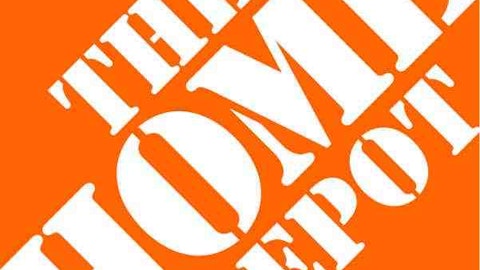The Procter & Gamble Company (NYSE:PG)‘s recent earning reports weren’t too impressive: they showed low growth in revenue and narrower profit margins. Is this the right company for investors who seek low-risk investments in the stock market? Are there other low-thrill companies worth considering instead of The Procter & Gamble Company (NYSE:PG)?
Is Procter & Gamble growing?
According to the company’s recent financial reports, among P&G’s five operating segments, grooming was the most profitable: its profitability reached 27.1% during the recent quarter and 30.6% during the fiscal year. The table below summarizes the company’s revenue, profit margins and yearly change in revenue for each business segment during the 2013 fiscal year.

Despite the high profit margin in the grooming segment, its revenue fell by 4% during the year. Moreover, this segment is the smallest – it accounts for only 10% of The Procter & Gamble Company (NYSE:PG)’s total revenue. If this trend persists, it could shrink the company’s profit margin further in the near future.
Not so bad
But the company’s situation isn’t dire: its sales volumes rose during the past 12 months by nearly 2%. The company also raised prices by roughly 1%, which helped counter the adverse effect of unfavorable foreign-exchange developments. Considering the potential changes that central banks could implement in the coming years, the unfavorable currency shifts are likely to keep adversely affecting The Procter & Gamble Company (NYSE:PG)’s bottom line.
How is the company doing compared to other leading consumer-goods companies?
Two other big consumer-goods companies are Johnson & Johnson (NYSE:JNJ) and Colgate-Palmolive Company (NYSE:CL). In terms of revenue growth, Johnson & Johnson has outperformed both companies: its net revenue increased 8.5% in the second quarter. In comparison, The Procter & Gamble Company (NYSE:PG) and Colgate-Palmolive Company (NYSE:CL)’s net revenue grew by 2.2% and 1.9%, respectively. Most of Colgate-Palmolive’s revenue growth came from Asia/Africa: this region accounts for 21% of its revenue, a number that increased by 8% during the recent quarter.
Johnson & Johnson (NYSE:JNJ) also leads the way in terms of profitability (after controlling for write-downs of intangible assets and other non-operational provisions), as seen in the chart below.

J&J’s high profit margin compared to the above-mentioned companies is partly due to its high profit margin in the pharmaceutical segment. Profit margins for the company’s pharmaceutical segment and consumer segment were 39.2% and 14.4%, respectively. These companies’ profits are also rolled back to their shareholders via dividend payments.
Dividend payments
P&G has increased it dividend payment to reach slightly more than $0.60 per share this year. This puts the company’s annual yield at 3%. This annual yield is close to the dividend yield offered by other companies: Johnson & Johnson offers an annual yield of nearly 3.0%, while Colgate-Palmolive provides a yearly yield of 2.3%. L
Outlook for fiscal year 2014
The company has updated its projected core earnings per share in fiscal year 2014 to range between $4.25 and $4.33 – an increase of 5% to 7% compared to 2013; this puts the mean at $4.29 per share. Considering in 2014 the expected global economy will grow by 3.5% to 4%, P&G’s expected rise in growth isn’t that high.
Moreover, since inflation in advanced economies will be around 2%, and for emerging and developing economies it will be around 5.6%, most of the company’s growth won’t come from an increase in volume, but from price increases. Relying mostly on price increases might eventually result in a drop in volume, which will cut the company’s growth in revenue.
In comparison, Johnson & Johnson has a slightly brighter outlook for the year: based on the company’s current expectations for 2013, its net earnings will grow by 6% to 7%. Most of the growth will come from its pharmaceutical segment and outside of the U.S. Let’s factor in these outlooks when we compare these companies’ valuations.
Valuation
In terms of valuation The Procter & Gamble Company (NYSE:PG) is close to its peers, as its enterprise-value-to-EBIT ratio is 15.7. This ratio accounts for a company’s capital structure and not just its operating profits. In comparison, Colgate-Palmolive’s ratio is 16.5, and Johnson & Johnson has an EV-to-EBIT ratio of 16.

This means Procter & Gamble isn’t expensive compared to its peers, and only slightly expensive compared to the industry’s average. But Johnson & Johnson has higher potential growth than Procter & Gamble has. This puts Johnson & Johnson slightly ahead of Procter & Gamble in terms of valuation.
Takeaway
Proctor & Gamble is still a solid, low-thrills investment for those who wish to mostly rely on the company’s dividend yield and limited risk. The company’s guidance isn’t high for 2014, which means unless Proctor & Gamble cuts costs further or expands to other markets or segments, its profits won’t rise anytime soon. Therefore, investors might benefit from examining other companies that offer a similar dividend yield but could grow faster, such as Johnson & Johnson.
The article Is It Worth Investing in Procter & Gamble? originally appeared on Fool.com and is written by Lior Cohen.
Lior Cohen has no position in any stocks mentioned. The Motley Fool recommends Johnson & Johnson and Procter & Gamble. The Motley Fool owns shares of Johnson & Johnson.
Copyright © 1995 – 2013 The Motley Fool, LLC. All rights reserved. The Motley Fool has a disclosure policy.






